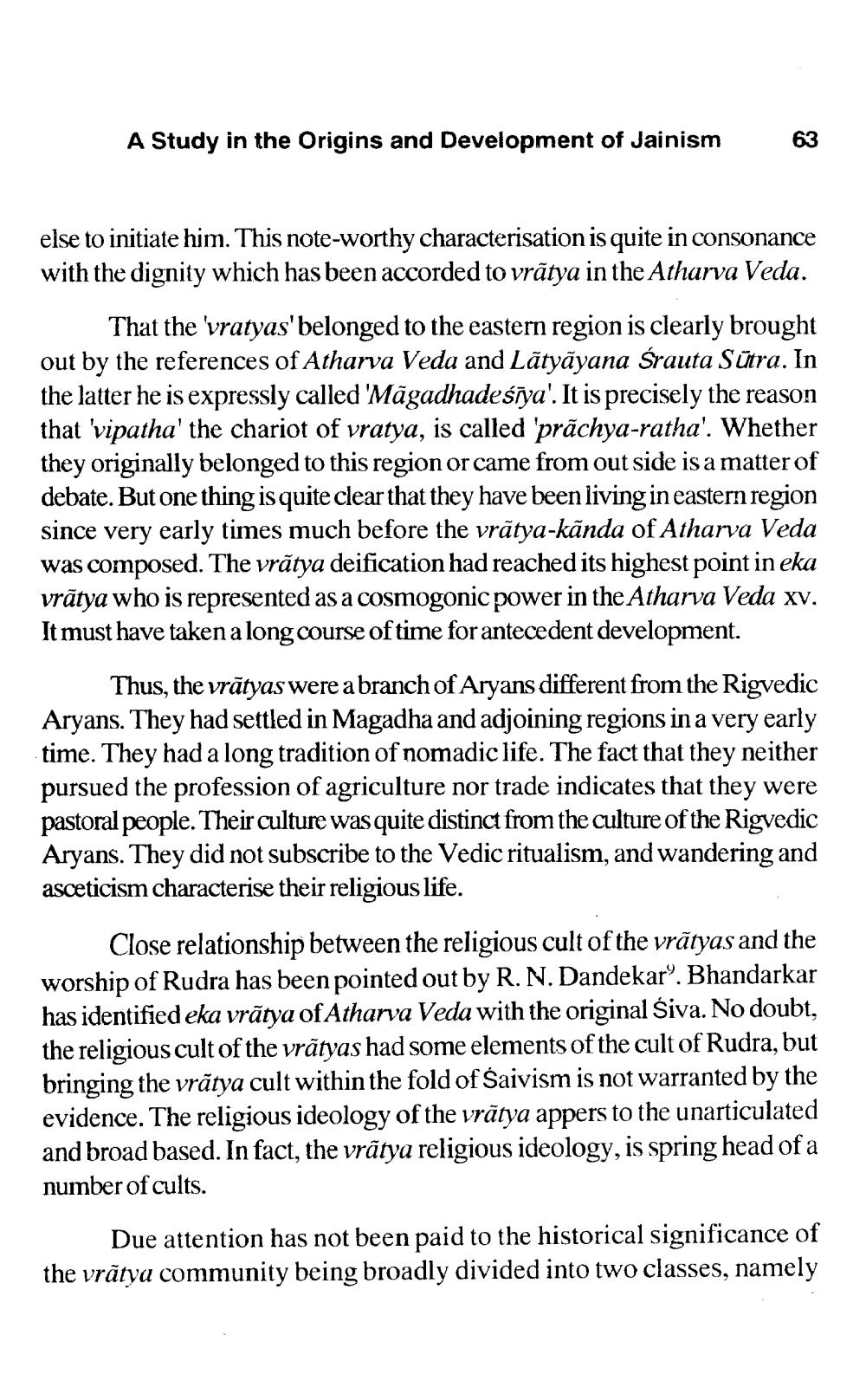________________
A Study in the Origins and Development of Jainism
63
else to initiate him. This note-worthy characterisation is quite in consonance with the dignity which has been accorded to vratya in the Atharva Veda.
That the 'vratyas' belonged to the eastern region is clearly brought out by the references of Atharva Veda and Latyāyana Śrauta Sūtra. In the latter he is expressly called 'Magadhadeśīya'. It is precisely the reason that 'vipatha' the chariot of vratya, is called 'prãchya-ratha'. Whether they originally belonged to this region or came from out side is a matter of debate. But one thing is quite clear that they have been living in eastern region since very early times much before the vratya-kanda of Atharva Veda was composed. The vratya deification had reached its highest point in eka vratya who is represented as a cosmogonic power in the Atharva Veda xv. It must have taken a long course of time for antecedent development.
Thus, the vratyas were a branch of Aryans different from the Rigvedic Aryans. They had settled in Magadha and adjoining regions in a very early time. They had a long tradition of nomadic life. The fact that they neither pursued the profession of agriculture nor trade indicates that they were pastoral people. Their culture was quite distinct from the culture of the Rigvedic Aryans. They did not subscribe to the Vedic ritualism, and wandering and asceticism characterise their religious life.
Close relationship between the religious cult of the vratyas and the worship of Rudra has been pointed out by R. N. Dandekar. Bhandarkar has identified eka vratya of Atharva Veda with the original Śiva. No doubt, the religious cult of the vratyas had some elements of the cult of Rudra, but bringing the vratya cult within the fold of Saivism is not warranted by the evidence. The religious ideology of the vratya appers to the unarticulated and broad based. In fact, the vratya religious ideology, is spring head of a number of cults.
Due attention has not been paid to the historical significance of the vratya community being broadly divided into two classes, namely




